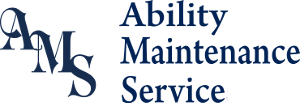Floor Cleaning Tips
It continually amazes me how many office janitors I come across who are experienced cleaners, yet fail to clean a floor properly. I am not talking about buffing or waxing, which are more specialized skills, but just a basic sweep and wet mop of a hard surface floor. So here are the basics:
The floor needs to be thoroughly swept and dust and loose dirt picked up before wet mopping. Use a dust mop for open areas and under furniture. Use a broom or hose vacuum for corners and edges. (You can blow with your breath behind furniture to expose dust bunnies.)
Use a mop bucket with warm water and a neutral floor cleaner chemical, diluted properly. Wet mopping should be the last step in office cleaning. Start in the far corner so you do not have to walk on a wet floor, leaving your dirty foot prints (obviously).
Ring the mop out well so that it does not drip. If it drips, you are leaving too much water on the floor. Excess water leaves obvious water marks and dirt residue when it dries.
Watch the floor carefully when you mop so you can put pressure on the mop head as needed to clean dirtier spots. Do not forget to mop the corners and edges. Some spots, like gum, tape, tar or food do not mop off and require a razor knife or sharp putty knife to scrape them off. Have this tool in your pocket. It works better than your fingernail (and much better than leaving the spot behind). The knife can also be used to scrape off stubborn scuffs.
While you are mopping, look at the floor where the overhead lights reflect off the floor. The floor dirt is most visible there. This way you won’t miss any spots. Keep your eyes on the floor!
A floor that has not been mopped properly will have dirt residue at the edges of the floor. Remove those by using more water and pressure on the mop head on those areas. Tip: Extra pressure can be put on the mop to remove dirty spots by stepping on the wet mop head and moving or twisting it with your foot (this technique works well and is not patented).
Some floors are so dirty that they require 2 moppings to get clean. In this case, use more water on the first mopping and less on the second. Do not leave the floor too wet.
When mopping large areas, use a bucket that has 2 compartments; one for clean water and the other for dirty.
As a final note (which step should be done first) put out wet floor signs at all entrances to the wet floors before mopping if anyone else is in the building!
Wet floors can be slippery. Keep safety in mind.
Ralph Temps
Owner
Ability Maintenance Service

